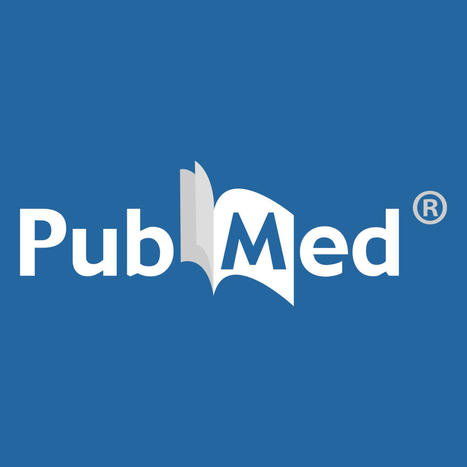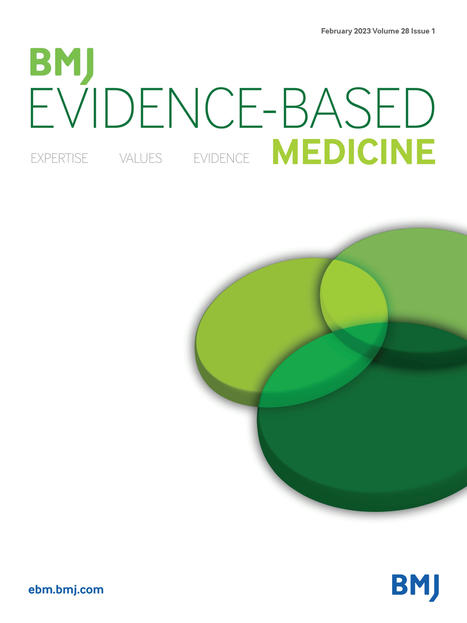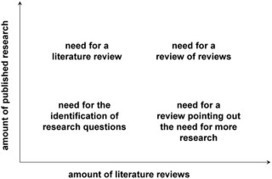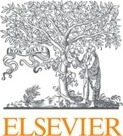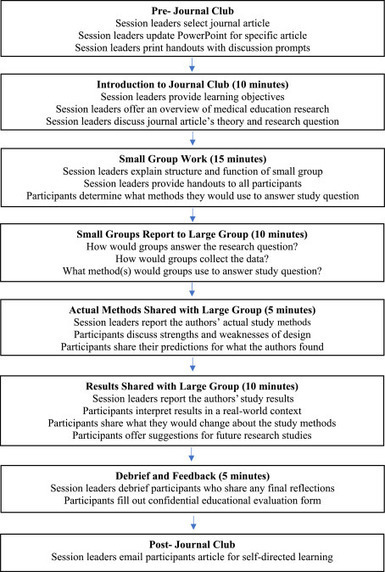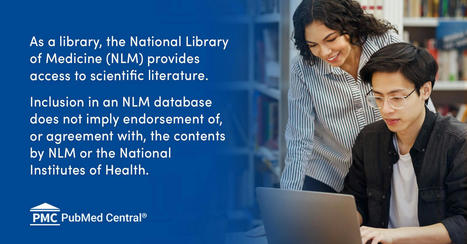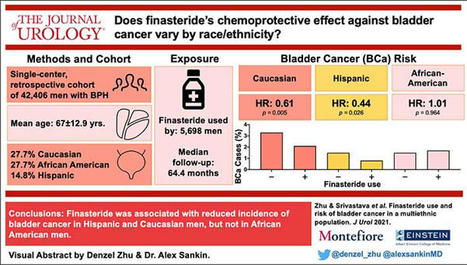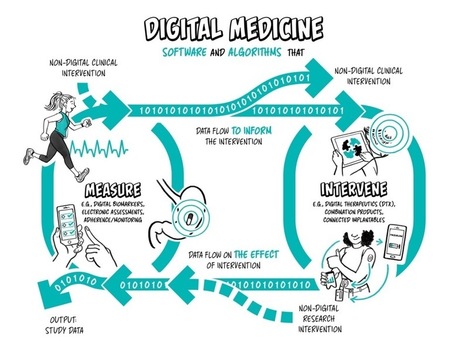 Your new post is loading...
 Your new post is loading...
A 10-month impact evaluation of a journal club among diagnostic radiographers in a single NHS Trust: A service evaluation study
Evidence-based practice (EBP) requires that clinicians possess skills in appraisal of evidence. Journal club (JC) is demonstrated to increase EBP skills in medicine, nursing, and occupational therapy. Study in physical therapy remains elusive. The objective of this study was to examine the impact of …
Background Research centers and programs focused on dissemination and implementation science (DIS) training, mentorship, and capacity building have proliferated in recent years. There has yet to be a comprehensive inventory of DIS capacity building program (CBP) cataloging information about...
The early stages of the COVID-19 pandemic placed clinicians in a position of having to manage patients with a previously unknown disease, with no well-established information on diagnosis, treatment or prognosis.
Background Allied Health Professionals (AHPs) commonly use journal clubs (JCs) to support Evidence-Based Practice (EBP). There is however little research regarding implementing and sustaining JCs in the long term, and their impact on EBP use and skills in AHPs. This study investigated the impact of implementing a structured JC format, called “TREAT” (previously only investigated across 6 sessions), over a longer period of 16 sessions for AHPs in a public health service. The study also investigated AHP’s attendance, adherence, satisfaction and barriers and enablers to implementing the format. Methods A mixed methods hybrid-effectiveness implementation design was employed, guided by the Knowledge-to-Action cycle. EBP skills, confidence, use, and attitudes were assessed (Adapted Fresno Test, EBPQ, tailored journal club culture questionnaire) at baseline, and after 10 and 16-monthly sessions. Satisfaction and impact on clinical practice were explored using questionnaires at 10 and 16-months, with free-form responses identifying enablers and barriers to EBP culture and implementation. Data on attendance and adherence to the TREAT format were also collected. Results Six JCs comprising a total of 132 unique participants from seven Allied Health professions were assessed across three time points. EBP skills improved on the Adapted Fresno Test after 10-monthly (6.6 points: 95% CI, 0.43 to 12.7) and 16-monthly sessions (7.8 points, 95% CI, 0.85 to 14.7), and on self-reported total EBPQ ratings of confidence at 10-months (4.9 points: 95% CI, 2.2 to 7.5) and 16-months (5.7 points: 95% CI 2.7 to 8.7). Of 132 AHPs, 88 reported adopting new treatments/resources and 64 reported updating clinical procedures. Mean attendance was 5.7 sessions (SD = 3.8). Adherence to TREAT components in each session was 86% (95% CI, 83% to 89%). Most participants recommended the format and reported a desire to continue. Enablers to the JC included using clinically relevant topics and active participation while reported barriers included limited time to prepare. Conclusions Despite variable attendance, TREAT JCs can continue to be implemented within a service for 16 monthly-sessions, and may contribute to improved EBP skills and confidence and changes in clinical practice over time. Tailoring of implementation strategies was shown to be important to address local enablers and barriers.
Citation: Pautasso M (2013) Ten Simple Rules for Writing a Literature Review. PLoS Comput Biol 9(7): e1003149. https://doi.org/10.1371/journal.pcbi.1003149 . Literature reviews are in great demand in most scientific fields. Their need stems from the ever-increasing output of scientific publications [1]. For example, compared to 1991, in 2008 three, eight, and forty times more papers were indexed in Web of Science on malaria, obesity, and biodiversity, respectively [2]. Given such mountains of papers, scientists cannot be expected to examine in detail every single new paper relevant to their interests [3]. Thus, it is both advantageous and necessary to rely on regular summaries of the recent literature. Although recognition for scientists mainly comes from primary research, timely literature reviews can lead to new synthetic insights and are often widely read [4]. For such summaries to be useful, however, they need to be compiled in a professional way [5]. When starting from scratch, reviewing the literature can require a titanic amount of work. That is why researchers who have spent their career working on a certain research issue are in a perfect position to review that literature. Some graduate schools are now offering courses in reviewing the literature, given that most research students start their project by producing an overview of what has already been done on their research issue [6]. However, it is likely that most scientists have not thought in detail about how to approach and carry out a literature review. Reviewing the literature requires the ability to juggle multiple tasks, from finding and evaluating relevant material to synthesising information from various sources, from critical thinking to paraphrasing, evaluating, and citation skills [7]. In this contribution, I share ten simple rules I learned working on about 25 literature reviews as a PhD and postdoctoral student. I
The purpose of this article is to reflect on the use of journal club exams in an evidence-based health care course for student pharmacists.Three journ…
Impact of a National Journal Club and Letter Writing Session on Improving Medical Students' Confidence with Critical Appraisal Shyam Ajay Gokani,1,* Ekta Sharma,2,* Tanisha Sharma,3 Shyam Venkatesan Moudhgalya,3 Subothini Sara Selvendran,4 Nikhil Aggarwal5 1Research Department of Primary Care & Population Health, University College London (Royal Free Campus), London, UK; 2Academic Section of Vascular Surgery, Division of Surgery, Imperial College London, Charing Cross Hospital, London, UK; 3Department of Medicine, St George’s University of London, London, UK; 4Department of Medicine, Southampton University, Southampton, UK; 5Department of Medicine, Barts and the London School of Medicine and Dentistry, Queen Mary University of London, London, UK*These authors contributed equally to this workCorrespondence: Shyam Ajay GokaniResearch Department of Primary Care and Population Health, University College London (Royal Free Campus), London, UKTel +44 20 7679 2000Fax +44 20 7472 6871Email shyamg@live.co.ukBackground: Critical appraisal is an important skill for clinicians of the future which medical students often have limited opportunities to develop. This study aimed to evaluate whether a national journal club session could improve medical students’ confidence with critical appraisal.Methods: 98 medical students attended a critical appraisal lecture and supervised journal article discussions. Junior doctor mentors supported students to submit discussion points as a letter-to-the-editor. An online cross-sectional survey was administered before and after the conference.Results: 74 students responded, reporting increased confidence with critically appraising research articles (median score 2 vs 4, p
The traditional journal club (JC) format of reviewing an article followed by group
discussion may be misaligned with millennial learners’ needs and may not rely on best
principles of adult learning. Our objective was to deliver an interactive JC allowing pediatric residents to critically engage...
I read the article by Miles and Patel [1] with great interest. The authors described
multiple advantages of using Twitter, ranging from personal branding to medical education. Many journals have started using Twitter to conduct online journal clubs, as using Twitter makes it possible to reach a...
J Surg Educ. 2018 Oct 13. pii: S1931-7204(18)30428-8. doi: 10.1016/j.jsurg.2018.09.012. [Epub ahead of print]
|
Training future doctors in the skills of evidence-based medicine (EBM) is clearly important. Journal club (JCs) are well-recognized educational interventions for teaching EBM. In contrast to postgraduate medical education, JCs use in undergraduate medica
The concept of a journal club has been around for decades and is a useful tool to help teach residents about evidence-based medicine. Although some students may be exposed to the concept during their third or fourth year of medical school, many do not have exposure to this until their residency. This innovation report describes a program to help introduce first and second-year medical students to a team-based approach to journal clubs so that they can apply principles of evidence-based practice early on in their medical school training.
In the Fall of 2020, a faculty and student effort led by members of the internal medicine and family medicine interest groups met to form a team-based program approach to the journal club focusing on first and second-year students. Teams of students were formed, and they were allowed to pick an article to review. They presented their findings to a group of students and faculty members via online meetings (due to coronavirus disease 2019 (COVID-19) restrictions).
This program has been introduced and done for two academic years. During that time, over 50 students participated in the program along with six faculty members. Countless students and faculty have been an audience to the presentations that have been done. The program is entering its third year of providing an engaging avenue for students to gain experience in analyzing articles and making presentations. The journal club program has and continues to be praised by faculty and students for its unique approach and style to a decade-old tradition.
We recommend that medical schools and other health-science programs across the country consider introducing a program like this to help stimulate critical discussions in an era of increasingly published medical literature. It is critical that students be given a chance to apply evidence-based practices early on in their medical education careers.
BackgroundThe ineffective utilization of journal clubs (JCs) for pre-clinical dental students has led to a lack of research into their effectiveness in developing skills such as critical reasoning and evidence-based medicine (EBM) practice. Therefore
Journal clubs and book clubs are educational activities used in health sciences education to teach evidence-based decision-making, critical thinking, …
Social media (e.g. Twitter, Facebook, Instagram) are platforms heavily used by medical professionals, and the lay public, to communicate and share results from research studies. Visual abstracts, which are visual representations of research articles, are visually engaging and concise ways of...
Self-evaluation is a critical step in professional development. Peer evaluation may enhance student learning and help peer evaluators recognize their …
PubMed comprises more than 30 million citations for biomedical literature from MEDLINE, life science journals, and online books. Citations may include links to full-text content from PubMed Central and publisher web sites.
Journal clubs are a good way of opening strong interdisciplinary discussion between clinicians or other pertinent disciplines (i.e., physicians, nurses, occupational therapists, physical therapists, and speech-language pathologists, etc.) and initiating implementation of research into practice.
This scoping review aims to gather and map inspiration, ideas and recommendations for teaching evidence-based practice across Professional Bachelor Degree healthcare programmes by mapping literature describing evidence-based practice teaching methods for undergraduate healthcare students including the steps suggested by the Sicily Statement. A computer-assisted literature search using PubMed, Cinahl, PsycINFO, and OpenGrey covering health, education and grey literature was performed. Literature published before 2010 was excluded. Students should be attending either a Professional Bachelor’s degree or a Bachelor’s degree programme. Full-text articles were screened by pairs of reviewers and data extracted regarding: study characteristics and key methods of teaching evidence-based practice. Study characteristics were described narratively. Thematic analysis identified key methods for teaching evidence-based practice, while full-text revisions identified the use of the Sicily Statement’s five steps and context. The database search identified 2220 records. One hundred ninety-two records were eligible for full-text assessment and 81 studies were included. Studies were conducted from 2010 to 2018. Approximately half of the studies were undertaken in the USA. Study designs were primarily qualitative and participants mainly nursing students. Seven key methods for teaching evidence-based practice were identified. Research courses and workshops, Collaboration with clinical practice and IT technology were the key methods most frequently identified. Journal clubs and Embedded librarians were referred to the least. The majority of the methods included 2–4 of the Sicily Statement’s five steps, while few methods referred to all five steps. This scoping review has provided an extensive overview of literature describing methods for teaching EBP regarding undergraduate healthcare students. The two key methods Research courses and workshops and Collaboration with clinical practice are advantageous methods for teaching undergraduate healthcare students evidence-based practice; incorporating many of the Sicily Statement’s five steps. Unlike the Research courses and workshop methods, the last step of evaluation is carried out partly or entirely in a clinical context. Journal clubs and Embedded librarians should be further investigated as methods to reinforce existing methods of teaching. Future research should focus on methods for teaching EBP that incorporate as many of the five steps of teaching and conducting EBP as possible.
Digital Medicine Society (DiMe)...
Journal clubs are commonly used by healthcare professionals, including pharmacists, as a means of analyzing and applying research to clinical practice…
|

 Your new post is loading...
Your new post is loading...
 Your new post is loading...
Your new post is loading...




